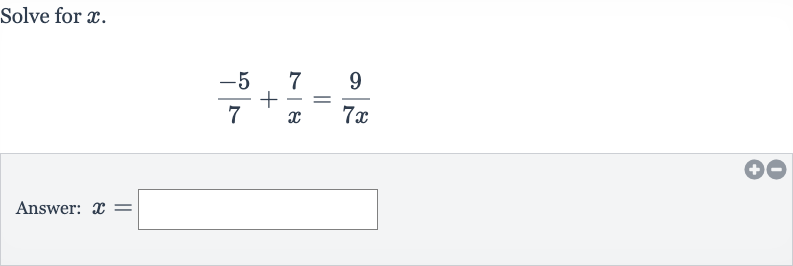AI tutor
Full solution
Q. Solve for .Answer:
- Write Equation: Write down the equation. rac{-5}{7} + rac{7}{x} = rac{9}{7x}
- Find Common Denominator: Find a common denominator for the terms on the left side of the equation, which is .
- Combine Fractions: Combine the fractions on the left side of the equation.
- Set Numerators Equal: Since the denominators are the same, we can set the numerators equal to each other.
- Subtract and Isolate: Subtract from both sides of the equation to isolate the term with .
- Divide to Solve: Divide both sides of the equation by to solve for .

